Chapter 11. Åbo and the Bishop [August 16, 1347]
Cultural Explanations
 |
Chapter 11. Åbo and the Bishop [August 16, 1347] Cultural Explanations |
|
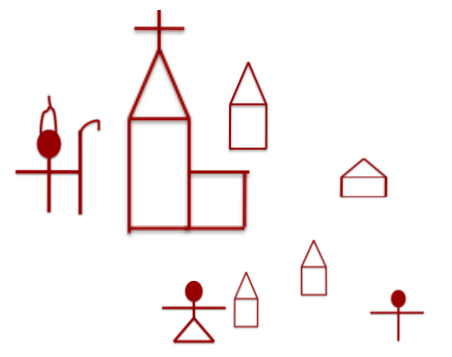 |
In this chapter Bávlos arrives in the grand city of Turku/Åbo and meets with Bishop Hemming. He hears about the martyrdom of St. Henrik. |
| Åbo, the bishop, and Bávlos |
In this chapter, Bávlos arrives at Finland's largest city during the fourteenth century, the metropolis of German merchants, Swedish officials and clergy known in Swedish as Åbo and in Finnish as Turku. As Father Jens had indicated, Turku was home to several hundred people at this time, making it tiny by modern standards and small even by the wider standards of the day. Paris during the fourteenth century had a population of between two and three hundred thousand, and even Stockholm, in the western half of the Swedish realm, had a population of several thousand. To a person coming from the remote north, however—a person whose life had always revolved around his extended family with only occasional dealings with neighbors and passing merchants—the experience of being in an urban environment like Turku must have been quite extraordinary. We don't know much about the city as it existed in this period however, because the remains of medieval Turku were largely destroyed by later building and by a major fire in the early nineteenth century. A few remains of the medieval city are preserved in the fine museum Aboa vetus et ars nova, an innovative museum that combines excavated archaeological remains from near the former site of the city's Dominican priory (Pekka's home) with modern art installations.
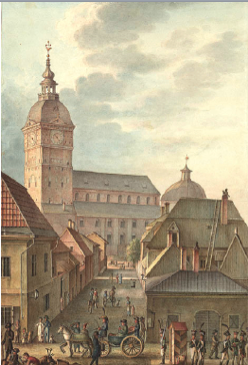 |
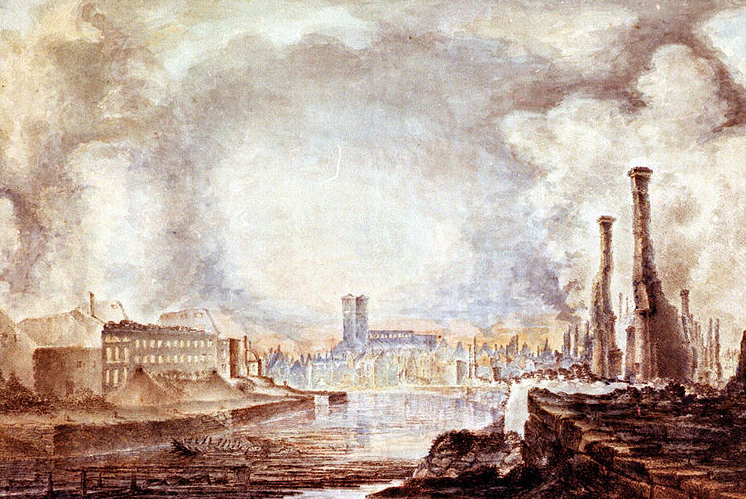 |
| Turku before the fire | Turku after the great fire of 1827 |
Bávlos arrives at the cathedral of Turku and marvels at its size. Indeed, the cathedral was a grand structure, consecrated in 1300 and dedicated both to the Virgin Mary and St. Henrik, Finland's martyr bishop (see below). As Bávlos observes, medieval cathedrals had no pews but rather were simply huge open spaces designed to accomodate many people at once. During ordinary days (August 16, 1347 was a Thursday), masses were conducted at any of the various side chapels that were arrayed along the sides of the main nave. Several masses could be taking place at the same time, and the faithful were free to wander by and listen to any mass as it proceeded. Wealthy patrons paid for masses to be said for their souls after death, and a cathedral's canons received a stipend for saying mass each day as prescribed. Patrons also paid for masses to be said at particular chapels as a way to thank saints for help they received or to honor saints as important inspirations and/or intercessors.
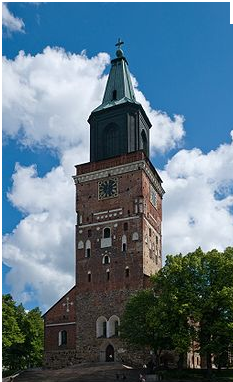 |
| Turku cathedral as reconstructed today |
Bávlos's visit to the bishop is not far from what might be expected during the medieval period. Bávlos is unlettered and unschooled in the faith, and it fell to the bishop to make sure that new heresies didn't arise in his see. Such was a constant threat, since most peasants didn't know the theology of the faith well enough to tell whether or not their beliefs accorded with the stipulations of the church or not. Striking visions could lead to mass movements among the peasantry, sometimes beneficial to the official church, sometimes not. In addition to these ecclesiastical considerations, it is also true that the medieval era was a time of rigid class distinctions, with an individual's life and possibilities strictly dictated by social class and family background. In this chapter, the bishop, as a member of his society's elite stratum, is intent on underscoring for Bávlos his social inferiority and the inappropriateness of his presuming to have visions.
Bishop Hemming (c. 1290—1366) was bishop of Åbo from 1338 to 1366. A Swede by birth, he worked hard to expand the cathedral during this time in Finland, constructing a bishop's residence, founding a school for training new priests, and establishing a hospital for the sick and dying. He was a close friend of the visionary Lady Birgitta, who did indeed advocate a Swedish crusade against the Orthodox rulers of the Novgorod Empire. There will be more details on Birgitta and this strange chapter of Swedish history in future chapters. Bishop Hemming was responsible for transferring (the medieval term was "translating") the relics of St. Henrik to the cathedral, which thereafter became an important pilgrimage site. Early on in his career, he met with his counterpart Bishop Hemming of Uppsala to settle the boundaries between their two sees. They decided upon the Torne River as the dividing line, and this river remains the land boundary between modern Sweden and Finland to this day. Bishop Hemming was beatified in the late fifteenth century, but the process of his canonization was interrupted by the Reformation.
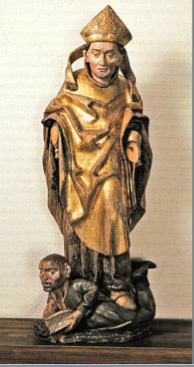 |
| Medieval statue of St. Henrik, with his murderer, Lalli, beneath his feet |
St. Henrik is the patron saint of Finland. He was English by birth and came to Finland from Sweden. He was martyred by a Finnish convert around the year 1150. Scholars have noted that Finland is fairly unique in medieval Europe in having a patron saint who was a foreigner and who was martyred by one of his converts. In a certain sense, the legend reminded the faithful of Finland of the fact that the faith had come to them from Sweden and that Sweden was the ruling side of the realm. The relic of St. Henrik's skull is still preserved at Turku Cathedral. After the Reformation, the various relics of the cathedral were removed from their altars. They were apparently not thrown away, however. Instead, they were placed in the tomb of Bishop Hemming where they were later rediscovered by archaeologists and art historians centuries later.
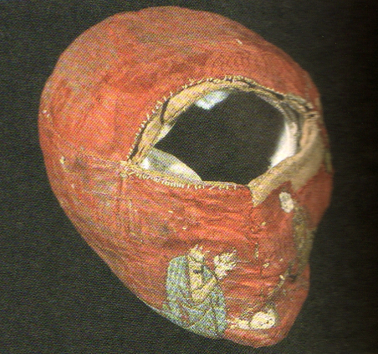 |
| The preserved skull that may have belonged to St. Henrik, showing its massive head wound. |
To read more about about Finnish medieval churches, see Markus Hiekkanen's fine book Suomen kivikirkot keskiajalla (Helsinki: Otava, 2003). For details on the life, martyrdom and cult of Bishop St. Henrik, see Tuomas Heikkilä's Pyhän Henrikin legenda (Helsinki: SKS, 2005). Both sources are in Finnish.